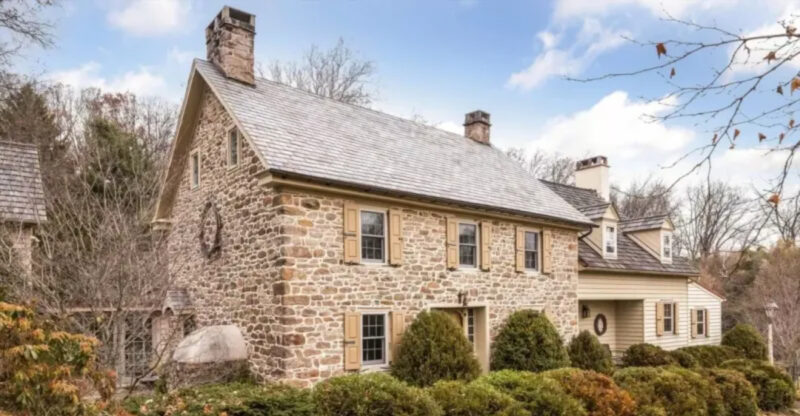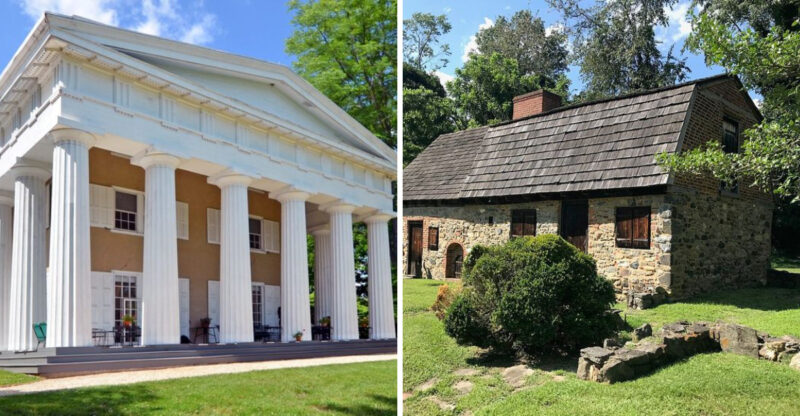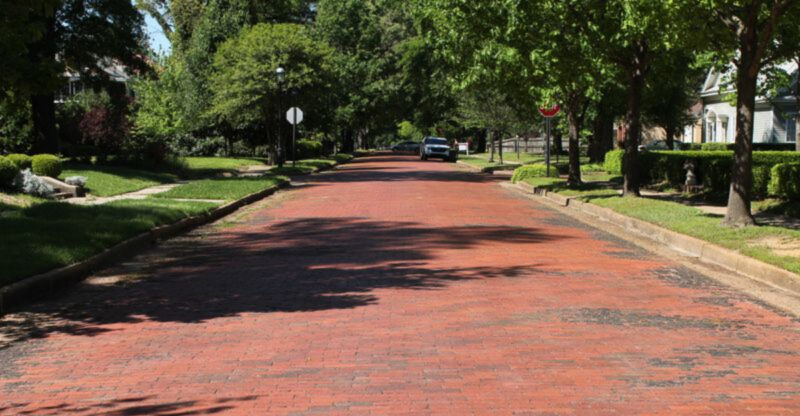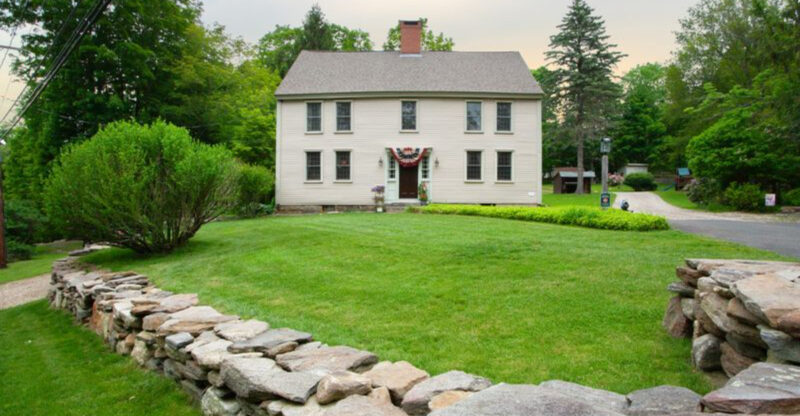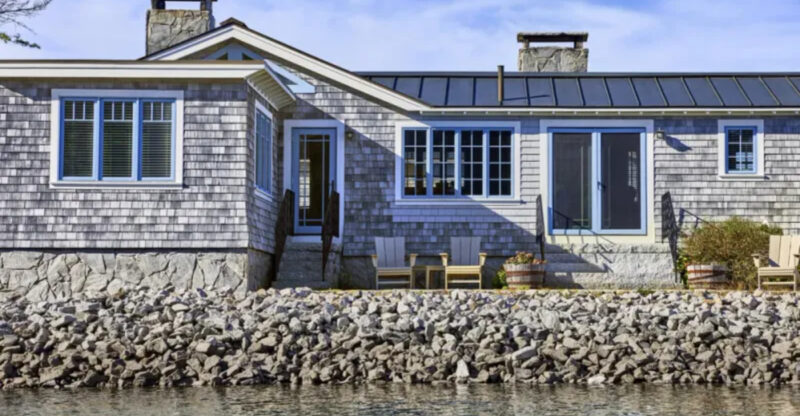24 Historic Southern Estates That Capture A Complicated Legacy
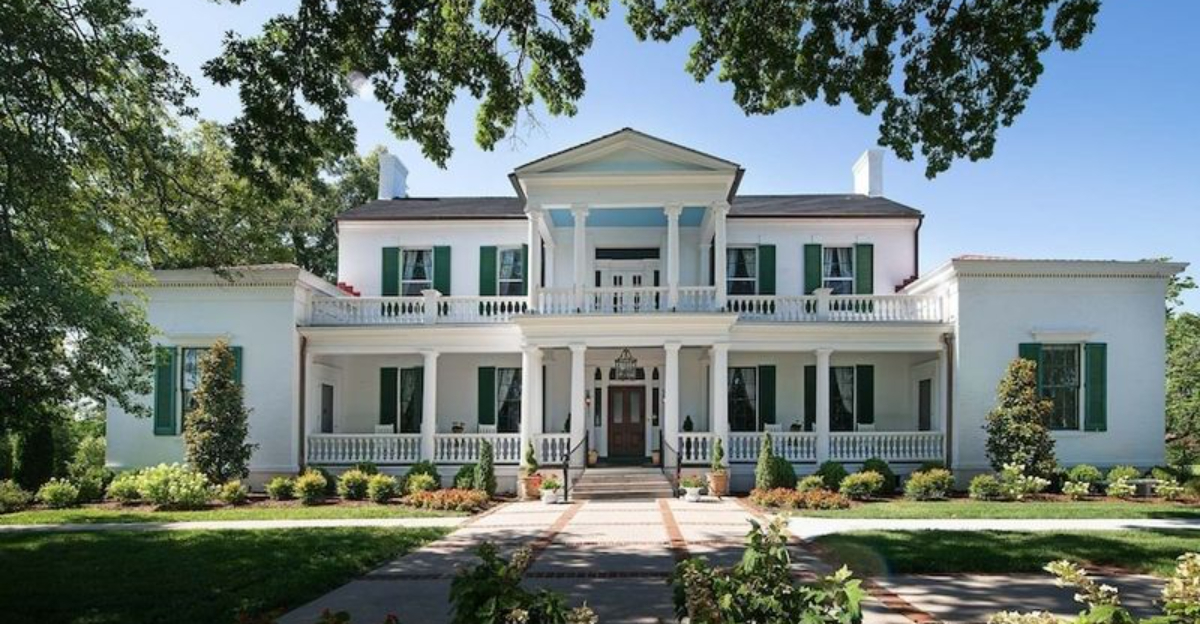
The grand estates of the American South stand as breathtaking monuments to architectural beauty and historical significance. Yet behind their majestic columns and sweeping gardens lies a complex story of wealth built on human suffering.
These historic properties invite visitors to explore both their undeniable beauty and the troubling foundations upon which they were built. Step through the gates of the South’s most iconic estates, where stunning architecture meets a past that still echoes through every hallway.
1. Oak Alley Plantation (Louisiana)
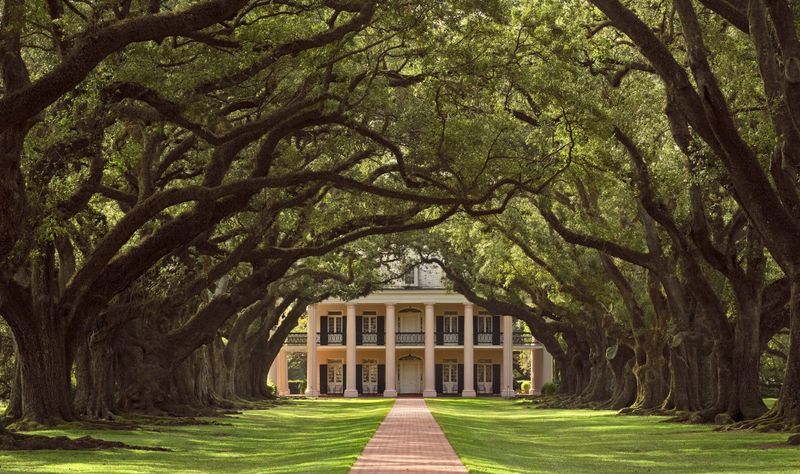
Standing beneath the canopy of 300-year-old oak trees feels like stepping into a storybook. The magnificent quarter-mile avenue of 28 oaks creates a natural cathedral leading to this Greek Revival masterpiece.
Oak Alley’s beauty masks its painful history as a sugar plantation where hundreds of enslaved people toiled. Tours now include exhibits on plantation life from all perspectives, including the brutal reality of those forced to work the land.
2. Boone Hall Plantation (South Carolina)
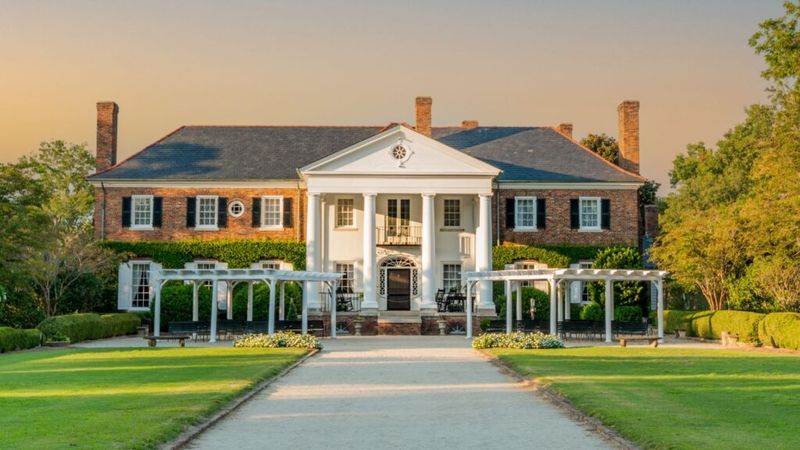
Perhaps you’ve seen this place without realizing it. Featured in dozens of films including “The Notebook,” Boone Hall’s avenue of oaks creates an unforgettable entrance to this working plantation.
Boone Hall’s brick slave cabins remain intact along what’s called “Slave Street,” offering a sobering glimpse into plantation life. Unlike many historic sites, this plantation continues agricultural operations today, maintaining a connection to its farming roots while acknowledging its complicated past.
3. Belle Meade Plantation (Tennessee)
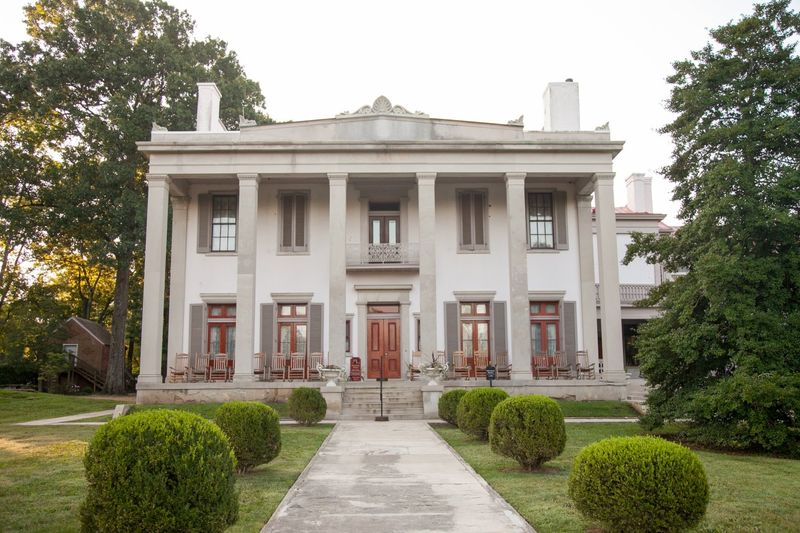
Though modest compared to some sprawling estates, Belle Meade’s Greek Revival mansion packs historical significance into every room. The estate was once America’s premier thoroughbred horse farm, producing bloodlines still dominant in racing today.
Belle Meade’s journey from prosperity to near-ruin mirrors the South’s post-Civil War struggles. The plantation’s wine-making operation has been revived, letting visitors sample vintages in the same spaces where equine royalty once roamed.
Its museum now addresses the lives of enslaved workers who built the estate’s fortune.
4. Stanton Hall (Mississippi)

How can a private home occupy an entire city block? Stanton Hall answers that question with pure antebellum extravagance. Completed in 1857, this Natchez mansion cost over $83,000 (millions in today’s money) and features imported Italian marble and massive mirrors shipped from France.
Frederick Stanton enjoyed his palatial home for just months before dying. The estate later served as a Union Army headquarters and girls’ college before becoming a museum.
Its opulent interiors reveal the enormous wealth some families accumulated in the cotton kingdom.
5. Belmont Mansion (Tennessee)
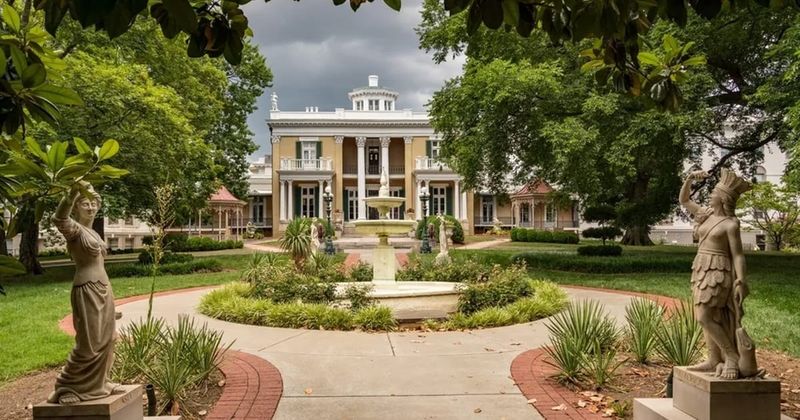
Unlike most Southern estates, Belmont wasn’t built by a plantation patriarch but by a remarkable woman. Adelicia Acklen became one of America’s wealthiest women through shrewd business dealings during the Civil War, managing cotton empires across multiple states.
Belmont’s Italian villa design stands apart from typical Greek Revival mansions. The 36-room summer estate featured lavish gardens, an art gallery, and even a private zoo.
Today, it sits at the heart of Belmont University, offering a glimpse into the life of a female business titan in the male-dominated antebellum South.
6. Rippavilla Plantation (Tennessee)
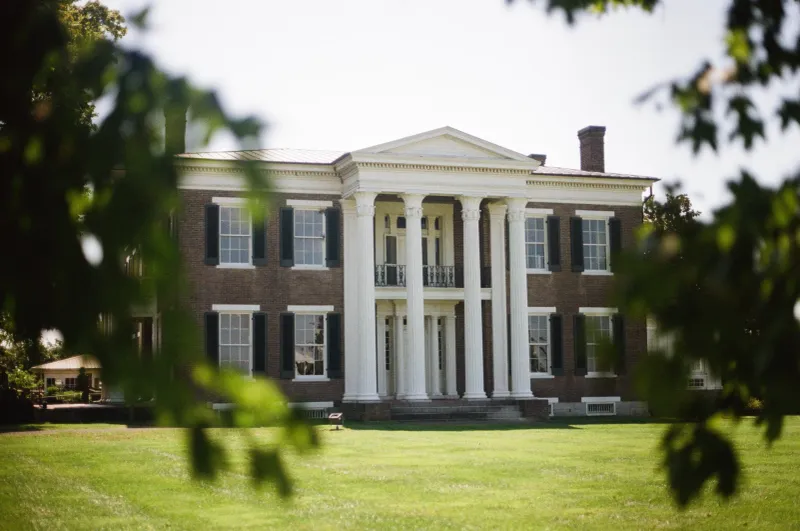
Where most plantation homes showcase wealth through ornate details, Rippavilla impresses with classical simplicity. The imposing brick mansion served as headquarters for Confederate General John Bell Hood before the Battle of Franklin, one of the Civil War’s bloodiest conflicts.
Rippavilla’s story extends beyond its architecture to the families, both free and enslaved, who lived there. The property includes rare intact slave quarters and a cemetery where enslaved people were buried.
Recent interpretive efforts focus on telling complete stories of all who lived and worked on the property.
7. Bleak House / Confederate Memorial Hall (Tennessee)
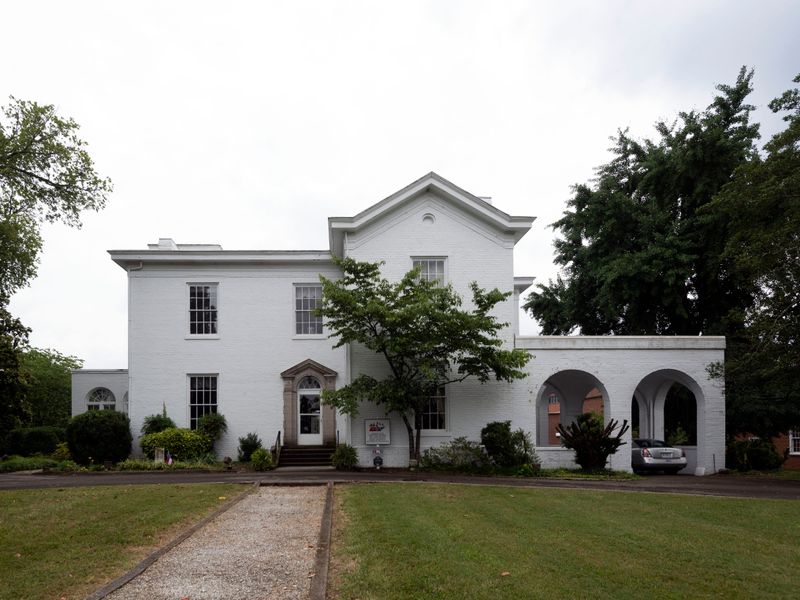
Despite its gloomy name, this Knoxville mansion boasts some of Tennessee’s finest Victorian architecture. Built in 1858 for wealthy industrialist Robert Armstrong, the house earned its literary nickname from Charles Dickens’ novel.
During the Civil War, Confederate General James Longstreet used Bleak House as headquarters during the Siege of Knoxville. Bullet holes and bloodstains remain visible in some rooms.
The mansion served as a hospital for wounded soldiers before becoming a memorial to the Confederate cause, reflecting the South’s complex relationship with its past.
8. Drayton Hall (South Carolina)
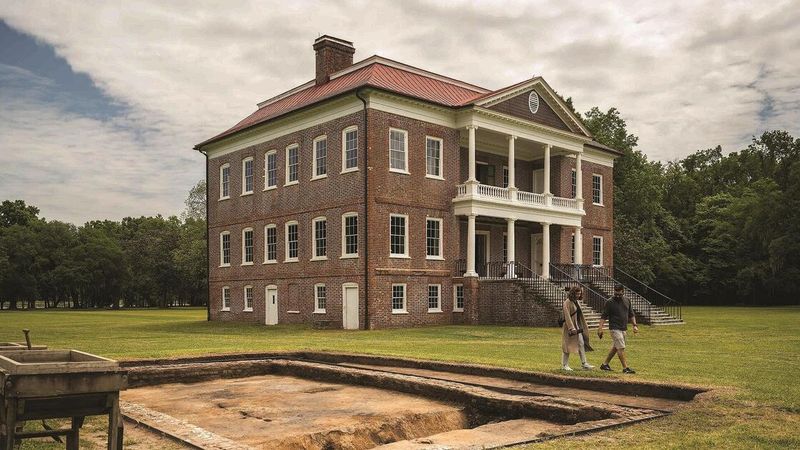
When you step into Drayton Hall, you’re seeing something incredibly rare, an untouched plantation house. Unlike most historic homes, it remains deliberately unrestored, with no electricity, plumbing, or modern amenities added.
Drayton Hall survived the Revolutionary War, Civil War, earthquakes, and hurricanes since its completion in 1742. Seven generations of the Drayton family owned the property until 1974.
The estate now presents an unflinching look at plantation life, including archaeological studies of the African American cemetery where enslaved workers were buried.
9. Belle Grove Plantation (Virginia)
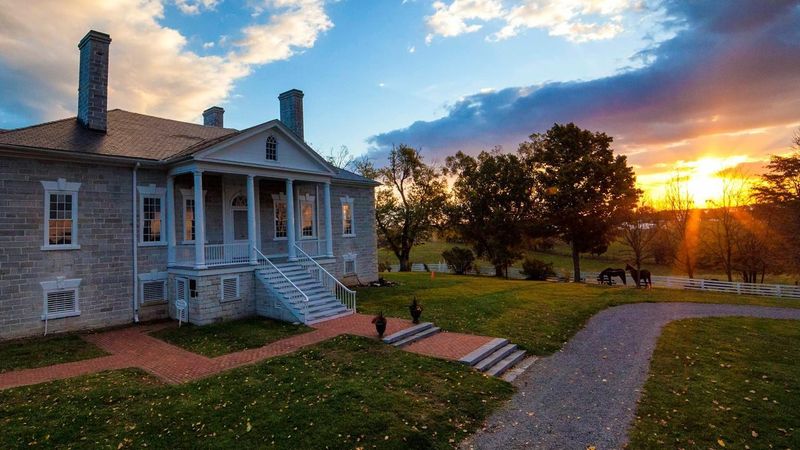
Nestled in the Shenandoah Valley, this limestone manor house seems to grow naturally from the landscape. Built in 1797 by Major Isaac Hite and his wife Nelly Madison (sister of President James Madison), Belle Grove represents the prosperity of early American grain farming.
The Battle of Cedar Creek raged across these grounds during the Civil War. Union General Philip Sheridan used the mansion as headquarters before his troops burned much of the surrounding valley.
Nowadays, the National Trust property tells stories of agricultural innovation alongside the harsh realities faced by the people enslaved here.
10. Laura Plantation (Louisiana)
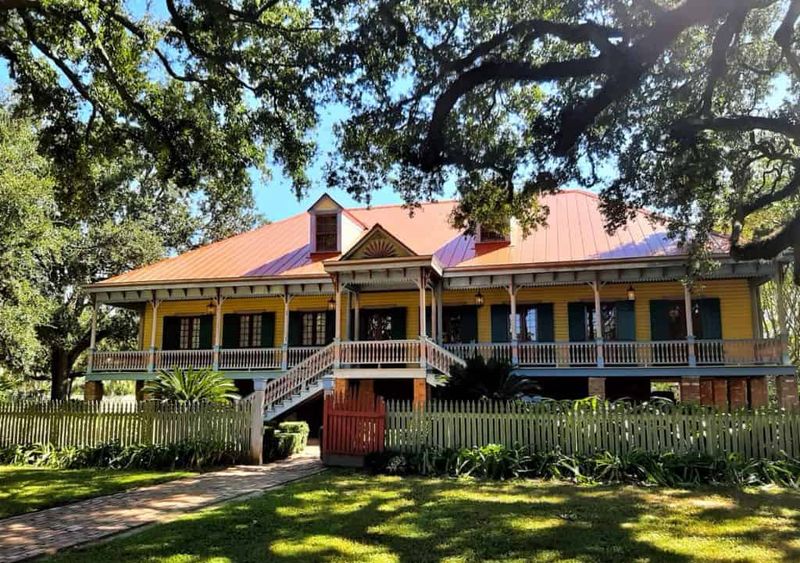
Unlike its Greek Revival neighbors, Laura Plantation bursts with Caribbean color in the Creole tradition. Four generations of powerful women ran this sugar plantation, including Laura Locoul, who later rejected her inheritance and wrote a revealing memoir about plantation life.
The radiant yellow main house contrasts with the stark reality of the 12 remaining slave cabins. These humble structures housed families whose stories are now central to the tour experience.
Laura Plantation is also known for preserving Br’er Rabbit folktales told by enslaved workers, stories that reveal cultural resistance through oral tradition.
11. Destrehan Plantation (Louisiana)
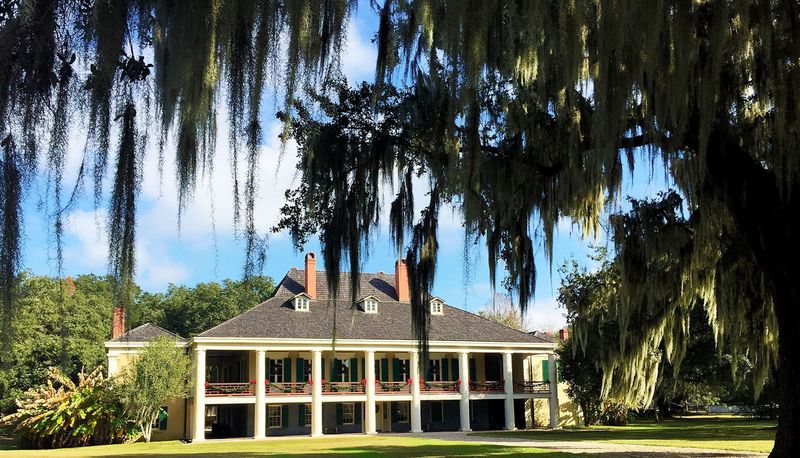
Where better to witness the collision of cultures than Louisiana’s oldest documented plantation home? Destrehan blends French Colonial and Caribbean influences into an architectural gumbo that stands apart from other Southern estates.
Completed in 1790, Destrehan witnessed the aftermath of America’s largest slave revolt in 1811. Three trials of captured rebels took place on the property.
The plantation’s interpretation now includes this history alongside exhibits on traditional crafts and the free people of color who worked as skilled artisans in the region.
12. Evergreen Plantation (Louisiana)
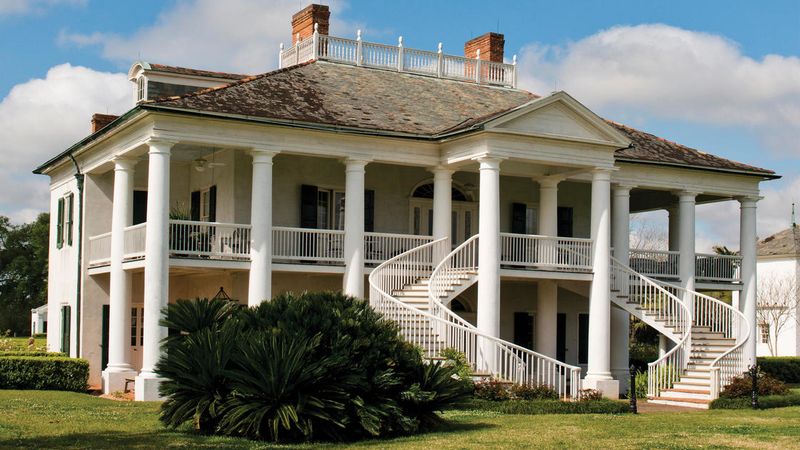
Hidden along the Mississippi River stands America’s most intact plantation complex. Evergreen features 37 buildings on the National Register of Historic Places, including 22 slave cabins arranged in their original double row configuration.
Evergreen remains a working sugarcane plantation today. Its Greek Revival main house dazzles with pristine white columns, while the preserved slave quarters create a powerful contrast.
The plantation offers tours focused on the agricultural systems and labor practices that built Louisiana’s sugar industry, acknowledging both architectural beauty and human cost.
13. Nottoway Plantation (Louisiana)
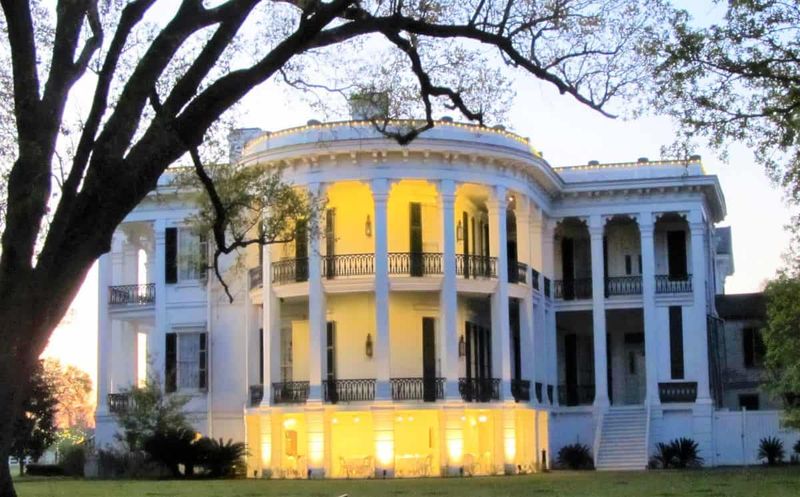
When subtlety isn’t your style, you build Nottoway. This massive 53,000-square-foot mansion contains 64 rooms of antebellum opulence, making it the South’s largest remaining plantation house.
Commissioned by sugar magnate John Hampden Randolph in 1859, Nottoway’s brilliant white exterior earned it the nickname “White Castle.” The most striking feature is the semi-circular white ballroom where Randolph’s daughters made their society debuts.
Now operating as a resort, Nottoway balances luxury hospitality with education about the 155 people once enslaved on the property.
14. Magnolia Plantation (South Carolina)
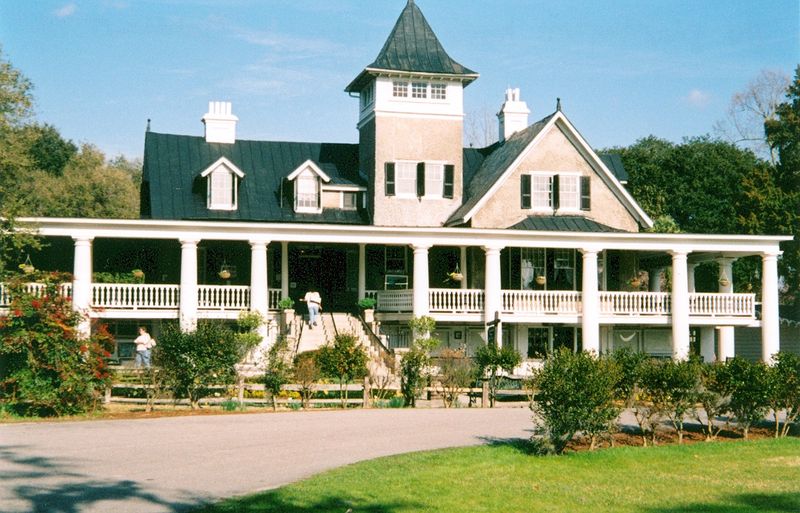
While many historic gardens showcase formal European designs, Magnolia Plantation embraces romantic wilderness. Founded in 1676 by the Drayton family, the estate is home to America’s oldest public gardens, first opened to visitors in 1870.
Magnolia’s sprawling gardens feature meandering paths, bridges, and natural landscapes where azaleas explode with color each spring. The plantation has preserved former slave dwellings as part of its “From Slavery to Freedom” tour.
Visitors can explore both breathtaking gardens and sobering historical exhibits about the people who created and maintained them.
15. Shirley Plantation (Virginia)
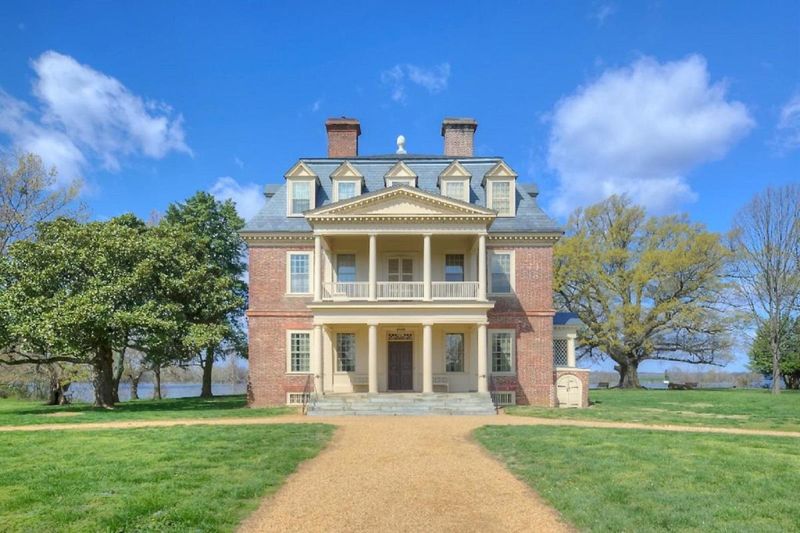
If walls could talk, Shirley Plantation’s would tell 400 years of American history. Established in 1613, it’s the oldest plantation in Virginia and has been continuously operated by the same family since 1738, for twelve generations.
The distinctive “flying staircase” in the main house appears to float without visible support, showcasing colonial craftsmanship. Shirley Plantation witnessed every major American historical period from the colonial era through today.
Its tour experience now includes the stories of enslaved families who worked the land for generations alongside the Hill-Carter family owners.
16. Whitney Plantation (Louisiana)

Unlike most historic estates, Whitney Plantation focuses exclusively on the enslaved experience. Opened to the public in 2014 after extensive research, this former indigo and sugar plantation has become America’s first slavery museum.
Whitney’s exhibits include life-sized sculptures of enslaved children throughout the property. Memorial walls list the names and personal details of over 350 people enslaved at Whitney.
Rather than glorifying wealth or architecture, the tour centers on the brutal labor conditions, resistance efforts, and cultural traditions of those who were enslaved here.
17. Double Plantation Historic Site (Louisiana)
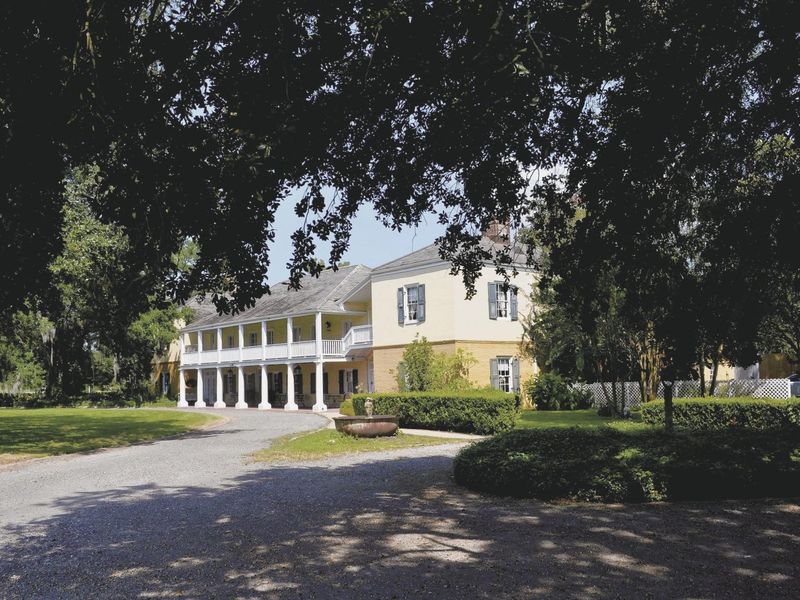
Two distinct plantation experiences stand side by side at this unique historic site. The elegant Ormond Plantation (1789) and more rustic Destrehan Plantation (1790) show different approaches to wealth display in colonial Louisiana.
Visitors can compare architectural styles, from Ormond’s West Indies influences to Destrehan’s French Colonial design. Both properties housed hundreds of enslaved workers who cultivated indigo and sugar.
The site now emphasizes the interconnected histories of these neighboring estates, including their roles during the 1811 German Coast Uprising, America’s largest slave revolt.
18. Pawnee Bill Ranch (Oklahoma)
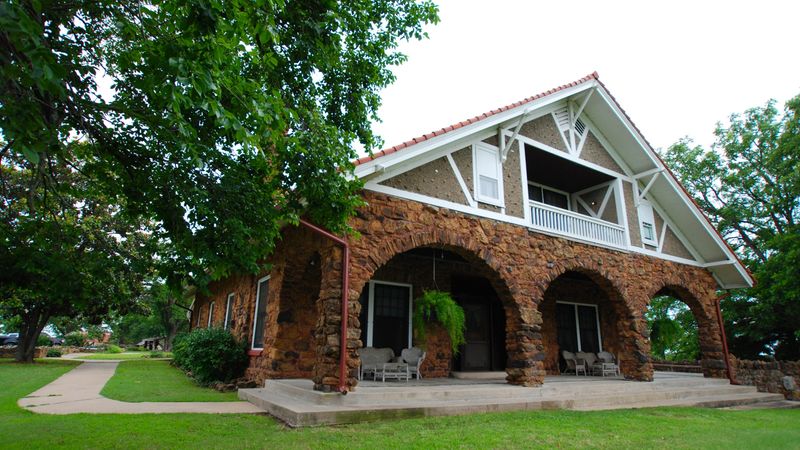
Not all Southern estates were built on traditional plantation agriculture. Pawnee Bill Ranch represents the Wild West showman era through the home of Gordon “Pawnee Bill” Lillie and his wife, May.
The 14-room mansion blends Victorian and Arts and Crafts styles, surrounded by 500 acres where Lillie raised buffalo, longhorn cattle, and exotic animals for his world-famous Wild West Show. The ranch tells a different Southern story, of entertainment entrepreneurship and the romanticizing of frontier life.
Today, visitors can tour the mansion, blacksmith shop, and barn while learning about early Oklahoma history.
19. Burt-Stark Mansion (South Carolina)
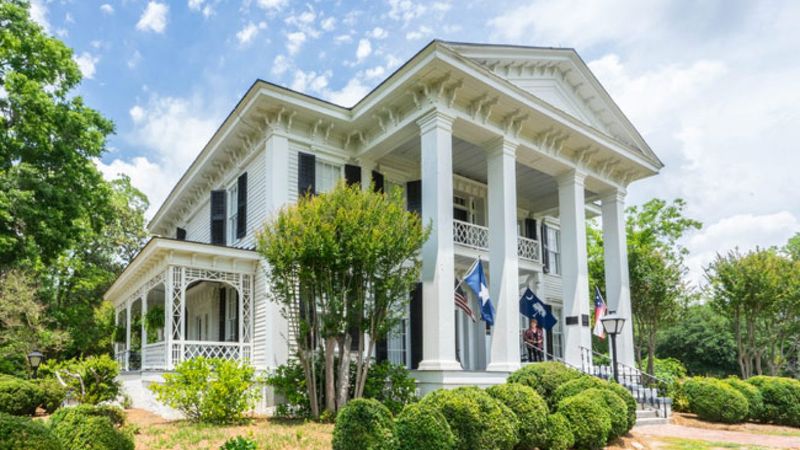
This modest white clapboard house witnessed the final Confederate Cabinet meeting. In May 1865, Jefferson Davis and his remaining government officials gathered here to admit defeat, effectively ending the Civil War.
Built in the 1830s by David Burt, the house features Greek Revival elements typical of wealthy small-town homes rather than grand plantations. The interior remains furnished with period pieces including some original to the house.
Unlike sprawling estates, this mansion shows how upper-middle-class Southerners lived during the antebellum and Reconstruction eras.
20. Belair Mansion (Tennessee)
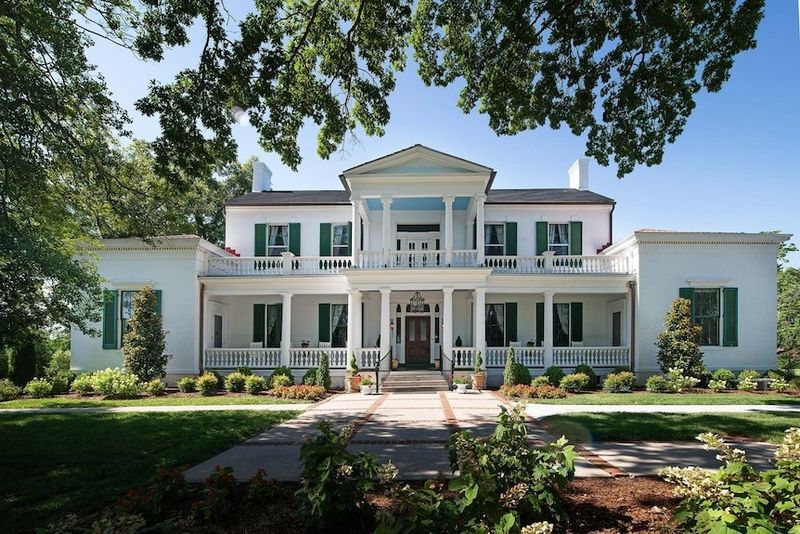
Hidden behind modern development stands this unexpected Federal-style gem. Belair Mansion served as headquarters for both Union and Confederate forces during the Civil War, with bullet holes still visible in some walls.
Built in 1832 by wealthy merchant John Belair, the house features distinctive cantilevered staircases and hand-carved woodwork. Unlike plantation homes, Belair represents the prosperous merchant class that formed Tennessee’s early commercial centers.
The mansion now hosts historical exhibits on early Tennessee commerce and the region’s divided loyalties during the Civil War.
21. Biltmore Estate (North Carolina)
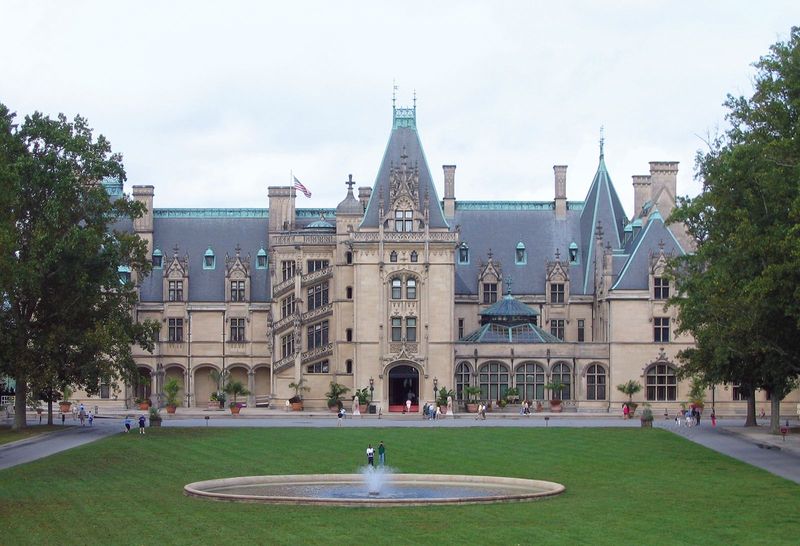
America’s largest privately-owned home redefines Southern grandeur on an almost unimaginable scale. Built by George Vanderbilt in the 1890s, this 250-room French Renaissance château sits on 8,000 acres near Asheville.
Biltmore represents the Gilded Age rather than antebellum wealth, built with railroad fortune instead of plantation labor. The estate included its own village, farms, and America’s first managed forest.
Unlike earlier Southern estates, Biltmore was created as a retreat rather than a working plantation, though it employed hundreds of local workers and sharecroppers.
22. The Hermitage (Tennessee)

Home to America’s most controversial president, The Hermitage reveals Andrew Jackson’s complex legacy. The Federal-style mansion began as a humble log cabin before expanding into the stately home we see today.
Jackson owned over 150 enslaved people who worked the 1,000-acre cotton plantation. Their stories are now central to the visitor experience.
The property includes slave quarters, gardens, and Jackson’s tomb. Modern interpretation addresses both Jackson’s democratic populism and his brutal treatment of Native Americans and enslaved African Americans.
23. Hofwyl-Broadfield Plantation (Georgia)
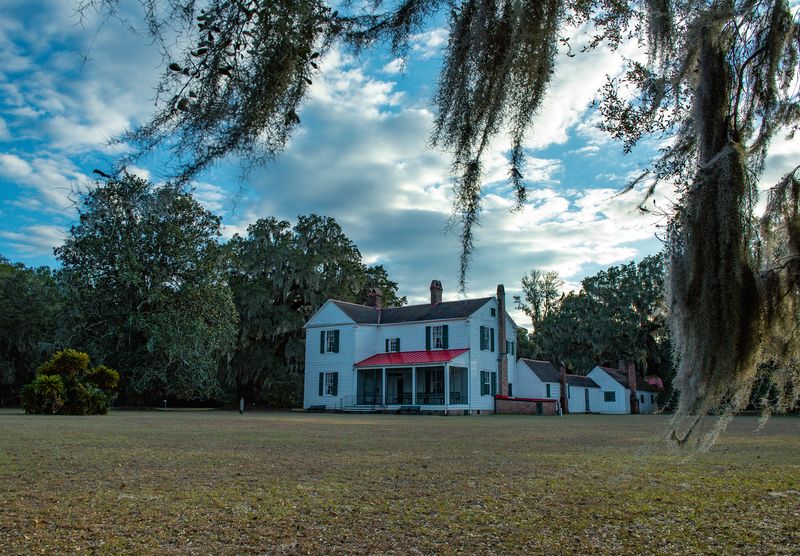
Time seems suspended at this coastal Georgia rice plantation. The modest plantation house lacks the grandeur of cotton mansions but tells a more authentic story of everyday plantation life from antebellum times through the early 20th century.
Hofwyl-Broadfield operated as a working rice plantation until 1913, when the owners converted it to a dairy farm. The property’s rice fields, tidal irrigation systems, and tabby slave cabins showcase the engineering behind rice cultivation.
Tours highlight the Gullah-Geechee culture developed by enslaved workers in coastal Georgia and South Carolina.
24. Rose Hill Mansion (South Carolina)
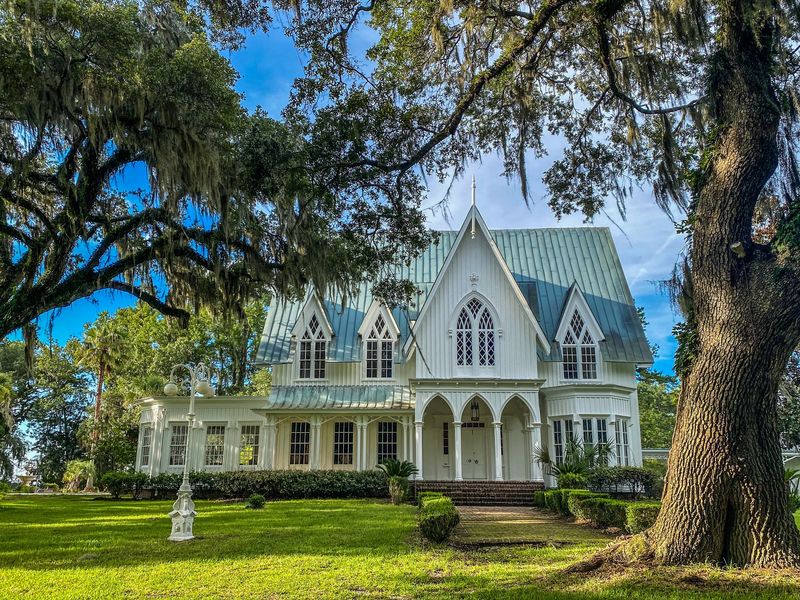
Gothic Revival architecture makes Rose Hill stand out among classical Southern mansions. Its distinctive castle-like appearance with pointed arches and decorative battlements seems transported from medieval Europe to the South Carolina Lowcountry.
Construction began in 1858 but was interrupted by the Civil War. The original owner never saw the completed home.
Rose Hill changed hands multiple times, suffering neglect before careful restoration in the 1990s. The mansion represents the architectural experimentation of wealthy plantation owners seeking to distinguish their homes from typical Greek Revival designs.

